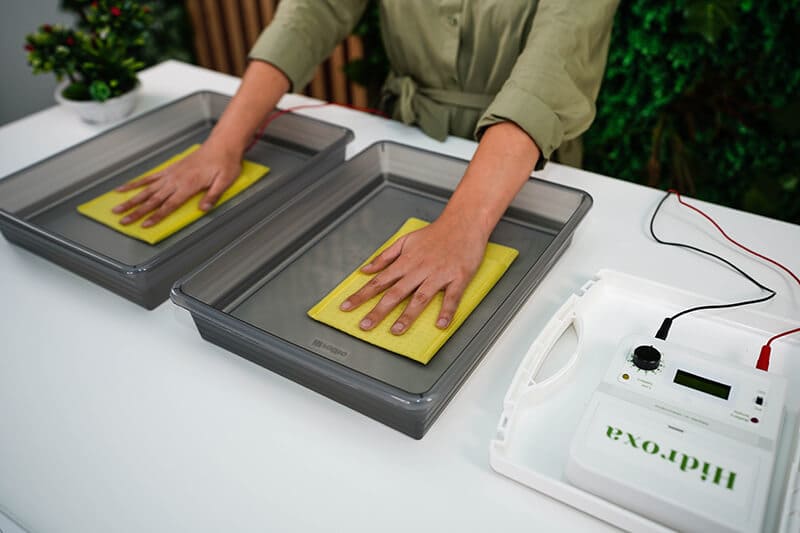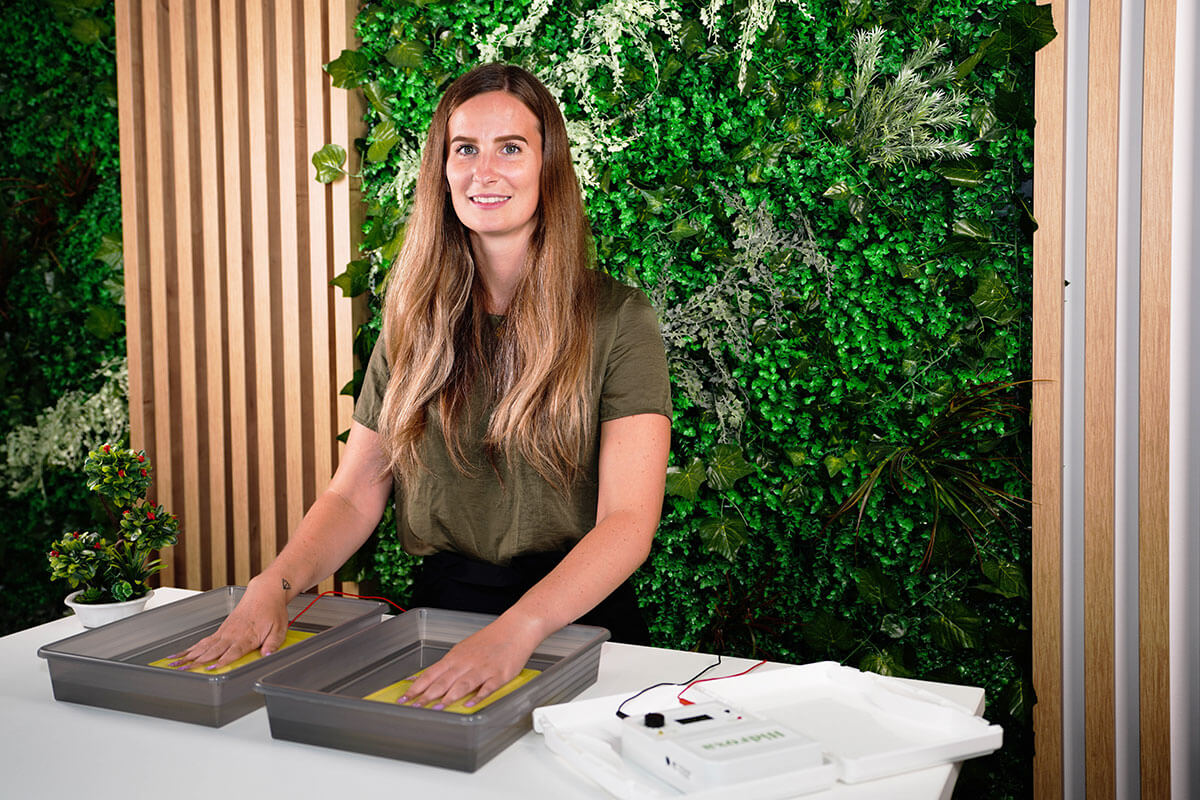Can hyperhidrosis be cured? Exploring solutions and expert advice
Hyperhidrosis is a condition characterized by excessive sweating that significantly exceeds the body's needs for temperature regulation. This intense sweating can seriously affect an individual's life, from emotional stress to social challenges. Finding the answer to the question "Can hyperhidrosis be cured?" requires research into the complex workings of the nervous system and how our bodies produce sweat.
Understanding hyperhidrosis
Sweating is a natural process for regulating body temperature, but for some individuals, the nervous system triggers an overproduction of sweat without typical triggers like heat or exercise. Hyperhidrosis is categorized into two types, each with distinct challenges and implications for finding a cure.

Types of Hyperhidrosis
- Primary hyperhidrosis: This form is characterized by heavy sweating, affecting one or several body parts such as the palms, feet, underarms, and face, without an identifiable underlying medical cause. Believed to be genetically linked, it often starts in childhood or adolescence, raising the question of whether hyperhidrosis can be cured from an early age.
- Secondary hyperhidrosis: This type results from another medical condition or the use of certain medications, leading to widespread excessive sweating. The cure for hyperhidrosis in these cases involves treating the underlying condition.
The first step for treating heavy sweating
The essential first step for treating heavy sweating is to consult with a medical professional. Since hyperhidrosis, or excessive sweating, can be caused by a variety of factors, it is important to seek the expertise of a healthcare provider who can accurately diagnose the underlying cause. They can then recommend appropriate treatment options, such as prescription antiperspirants, medications, or in some cases, more advanced treatments like iontophoresis or B. toxin injections. By seeking professional help, individuals suffering from heavy sweating can receive personalized care and guidance in managing their condition effectively.
Can Hyperhidrosis be cured?
Exploring the possibility of curing hyperhidrosis often leads to the understanding that managing symptoms and enhancing the quality of life are the primary goals, rather than finding a definitive cure. Treatments are designed to decrease sweat production and offer relief, although the idea of a "cure" implies a permanent solution. Nonetheless, individuals dealing with excessive underarm sweating have a unique exception where a more permanent solution is available.

miraDry: A Permanent solution for the armpits
The MiraDry System is a treatment designed to target and reduce excessive underarm sweating, also known as axillary hyperhidrosis. It uses a technology called microwave energy to selectively heat and destroy the sweat glands in the underarm area, ultimately reducing the amount of sweat produced. The procedure is performed in a doctor's office and typically takes about an hour to complete. Patients may require multiple treatments for optimal results, but once the sweat glands are destroyed, they do not regenerate, at least for a longer period of time, making the effects of the MiraDry System long-lasting. This innovative treatment provides a promising solution for individuals who struggle with excessive underarm sweating and seek a more permanent and effective remedy. Keep in mind that the treatment is quite invasive and can lead to swelling and pain of the treatment area.
Other treatment options
To alleviate sweating symptoms, exploring the various treatment options is crucial, as they provide different levels of symptom relief and control depending on the affected body area. While a complete cure remains elusive for many forms of hyperhidrosis, these treatments play a key role in managing the condition and improving the lives of sufferers.
Specialized antiperspirants
Antiperspirants containing aluminum chloride are the first defense against hyperhidrosis, especially in its milder forms. By temporarily blocking sweat ducts, they can significantly alleviate excessive sweating in targeted areas. This non-invasive option provides immediate relief and is easily accessible, making it a key tool for those looking to manage their symptoms.
Iontophoresis
Iontophoresis is a non-invasive treatment that uses a mild electrical current to temporarily shut down the sweat glands. This procedure is particularly effective for treating excessive sweating in the hands and feet. During treatment, the affected areas are submerged in water through which a gentle current is passed. The process disrupts the normal function of the sweat glands, leading to a reduction in sweating. Iontophoresis sessions are typically conducted several times a week, with maintenance treatments as needed to sustain the desired level of dryness. This treatment offers a viable option for individuals seeking an alternative to antiperspirants and injections, especially those with primary hyperhidrosis affecting their extremities.
Oral medications
Oral medications treat hyperhidrosis by targeting the nervous system, specifically blocking the chemicals that signal the sweat glands to activate. This approach can effectively reduce the total amount of sweat produced, offering relief to people with more generalized forms of sweating. Although not a cure, oral medications are a valuable option for those who want to manage their day-to-day symptoms.
B. toxin injections
B. toxin njections are known for their effectiveness in treating heavy underarm sweating, which is the primary problem in cases of primary hyperhidrosis. By temporarily disabling the nerves responsible for the activation of the sweat glands, B. toxin significantly reduces sweating. The effects, which last between 3 and 12 months, offer a temporary reprieve that can be renewed with subsequent treatments. This method contributes to the wider conversation about effective treatment of hyperhidrosis, even if it does not offer a permanent cure.
Each of these treatments emphasizes a current approach to hyperhidrosis: managing symptoms and improving quality of life for sufferers. While the term "cure" suggests complete elimination of symptoms, the reality for most people with hyperhidrosis is a path of symptom management. Innovations like miraDry for underarm sweating offer glimpses of potential long-term solutions, but for many, a combination of antiperspirants, medications and injections remains the cornerstone of effective treatment. With these methods, individuals can achieve significant improvements in their condition, handling the challenges of hyperhidrosis with more confidence and comfort.
FAQ Section
While current treatments significantly reduce symptoms and improve life quality, a permanent cure for hyperhidrosis remains elusive. The focus is on effective symptom management strategies.
While stress and anxiety can worsen sweating for some, hyperhidrosis is typically a separate condition not directly caused by anxiety.
Primary hyperhidrosis is noted for its often focal sweating and typically begins in youth without an underlying cause. Secondary hyperhidrosis is often more generalized, can start at any age, and is linked to other health issues, impacting the approach to whether hyperhidrosis can be cured. You cannot really distinguish between the two without the help of a doctor.
Each treatment, from antiperspirants to oral meds and Botox, carries potential side effects. These range from skin irritation to dry mouth and temporary muscle weakness, emphasizing the importance of personalized treatment plans in the quest to manage hyperhidrosis.
Conclusion
Although some individuals may find temporary relief from symptoms, in others hyperhidrosis does not go away over time. The severity of the condition varies from person to person, and for some, symptoms may improve with age or certain treatments. However, for a significant proportion of individuals with hyperhidrosis, the condition is a long-term struggle that requires ongoing treatment.
In conclusion, while the question "Can hyperhidrosis be cured?" has no direct answer, advances in treatment offer significant hope. With proper diagnosis and tailored treatment plans, hyperhidrosis sufferers can achieve significant relief, making the condition manageable and improving their overall quality of life. Feel free to reach out in case you need guidance on what to do next to combat excessive sweating.